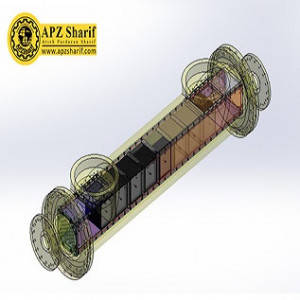| Atiyeh Pardazan Sharif |

| No Title | 0 MB |
| Registration Date | 7 Nov 2020 |
| Revision Date | 7 Nov 2020 |
| Share |
Environment Water and Wastewater
Seawater electrodeApplying a coating with a nanometer structure with dimensions of about 20 nanometers containing various metal oxides has reduced the consumption of expensive catalytic elements. Also, the voltammetry current and stability of this product have been improved compared to the similar commercial model.
Electrolysis of seawater is done for a variety of goals, such as the production of hydrogen or the production of sodium hypochlorite. Hydrogen from seawater electrolysis is used in various applications such as fuel cells that can supply energy and electricity to different areas. The use of hypochlorite produced by seawater electrolysis in oil, gas and petrochemical industries also reduces the problems caused by sediment and corrosion in parts and pipes of these industries.
In the electrolysis process, a direct electric current and two electrodes are used. In this process, a direct current source of electricity is connected to two electrodes in water, and water is decomposed to produce hydrogen gas at the cathode and oxygen gas at the anode.
In order to electrolyse seawater, electrodes made of mixed metal oxides (MMO) can be used, which usually have a low wear rate and their geometry remains almost constant. These electrodes, which are made of materials such as IrO2, PtO2 and RuO2, are a good alternative to older anodes such as graphite anodes. But the cost of these anodes is high. Some of the cheaper anodes are also made with pure titanium substrate and coated with mixed oxides. With the development of new nanotechnology-based electrodes and their replacement with traditional electrodes made of expensive metal elements such as platinum and iridium, the cost of the electrolysis process is reduced and the efficiency of this process is increased.